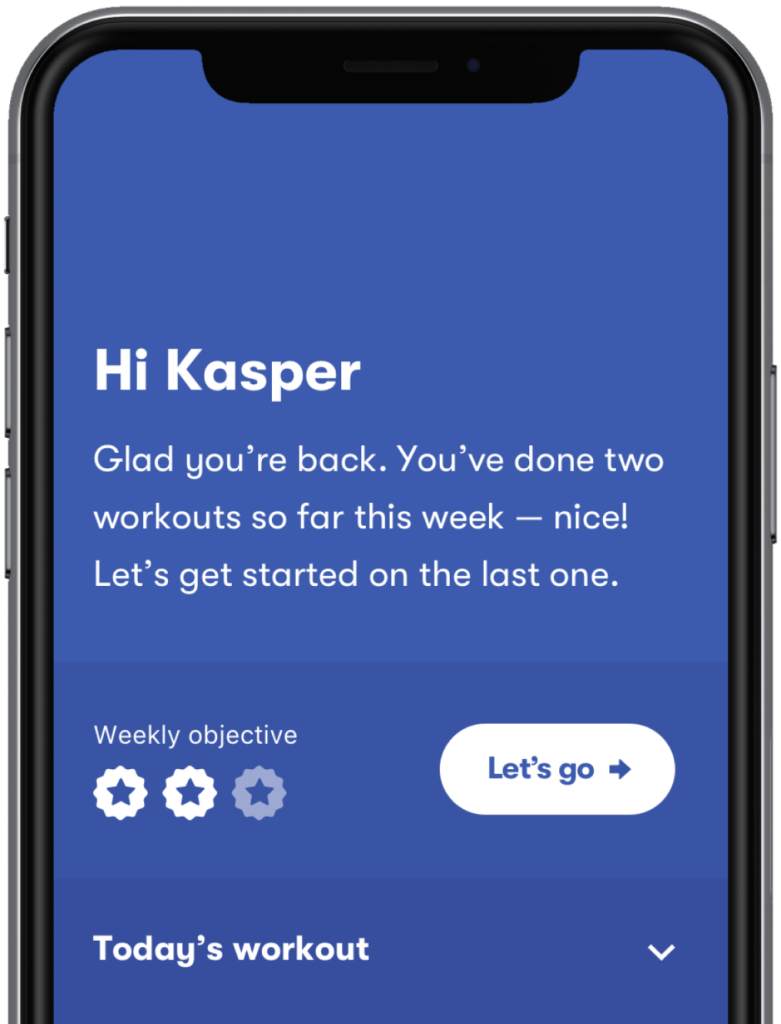Content:
What is a knee sprain?
What are the causes of a sprained knee?
Symptoms of a sprained knee
Diagnosis of a sprained knee
Treatment for knee sprains
Other treatment options for knee sprain
Recovery time
Complications of knee sprain
When to see a doctor
Helping you heal from knee sprain
The knee is one of the largest and strongest joints in the body. It supports the body’s weight and allows us to perform many everyday activities such as sitting, standing, walking, and running. The knee is a complex joint made up of different kinds of structures including bones, muscles, menisci, and ligaments. An injury to any of these structures can result in symptoms.
A knee sprain is a common injury, especially among people who take part in contact sports like football and rugby. A sprained knee can also occur during high-intensity sports like skating and skiing.1 This does not mean that knee sprains cannot occur in non-athletes.
You can also be unlucky to suffer a knee sprain as you go about your normal day-to-day activities. This usually happens because of an unnatural movement, like twisting during a slip and fall. Knee sprains can cause crippling symptoms that make it impossible to do your daily activities, let alone take part in sports. The good news is that you can control your symptoms and recover from a knee sprain with simple measures like home exercises.
At Injurymap, we are committed to helping you live a life free of injuries and pain. With this comprehensive guide, we will help you understand knee sprains and how to prevent them. Please remember, this guide is for general informational purposes only. You should get professional medical care if your symptoms do not improve with rehab exercises and other home treatments.
Looking for a solution to knee sprain? Try the Injurymap exercise app now.
Other treatment options for knee sprain
RICE Therapy: If you have suffered a sprained knee, it is important to allow a period of rest to allow the knee to heal. For mild to moderate sprains, doctors recommend RICE therapy. This includes R (rest), I (icing to reduce swelling), C (compression with an elastic bandage), and E (elevation of the injured knee).
Pain Medications: You can use nonsteroidal anti-inflammatory drugs (NSAIDs) such as ibuprofen. They provide short-term relief of pain and swelling. These drugs can help reduce symptoms and allow you to begin a rehabilitation exercise program. This is important to strengthen and stabilize the knee and prevent you from injuring it again.2
Bracing: Sometimes doctors recommend wearing a knee brace for a short period. This takes the load off the ligaments and supports the knee while it heals.2
Surgery: A torn ligament sometimes needs surgical repair. This can usually be done with a minimally-invasive approach (keyhole surgery) called arthroscopy. A tiny camera is inserted into the joint to guide the surgeon in repairing the ligament.2
Recovery time
Luckily, the vast majority of people with knee sprains recover fully. All you need is the proper treatment and a good rehabilitation program.
How long does it take to recover from a knee sprain?
In general, mild to moderate knee sprains usually heal in 2-4 weeks. People who need surgery for ligament repair can take up to 6 months to return to baseline.3 After operation, 80% of patients with ACL injuries, return to some form of sport, 65% return to the same sporting level and only 55% return to sport at a competitive level..1 MCL and LCL strains also heal well with conservative treatments like home exercises.
How do you know that you have recovered from a knee sprain?
You will know you have recovered from a sprained knee when you have no pain or swelling. You can move your knee freely in all directions. There is no problem with doing daily activities. You can play sports without any symptoms.
Complications of knee sprain
Even with proper treatment, a knee sprain can lead to other problems over time. People with long-standing knee sprain can develop degenerative joint disease (osteoarthritis) in the injured knee. This can lead to long-lasting pain and instability.2,3
When to see a doctor
Most people can manage a mild knee sprain at home and recover fully with home exercises. However, it is important to get the opinion of a medical professional if you suspect your knee injury is something more serious. How can you tell if your symptoms are worthy of a visit to the doctor? Here are some telltale signs that your knee injury needs to be looked at:4
- Your knee is locked (you’re unable to straighten it)
- You have severe pain and/or significant swelling
- You cannot put weight on the injured leg
- Your knee buckles (gives out or feels unstable)
- You have sharp pain in a specific location
- Your symptoms do not improve with home remedies
Helping you heal from knee sprain
A knee sprain is a common injury that can prevent you from living a full life. The pain can make it difficult to do your normal daily activities. You may not be able to play the sports you love.
Fortunately, a sprained knee is treatable. The injury heals quickly in most people. For mild sprains, doctors recommend that you continue using your knee normally even if it feels a little stiff and painful.5 Once the initial symptoms ease off, stretching and strengthening exercises are the quickest way to recover from a knee sprain. Remember to gradually increase exercises as the pain and swelling reduce. It’s a good idea to build strength with rehab exercises before returning to sports which can potentially cause a re-injury.
The Injurymap app has a range of effective exercises that can be performed at home with little to no equipment. If you have suffered a knee sprain, you should focus on exercises that will make your leg muscles stronger. This will not only speed up recovery from a sprained knee but also prevent future injuries. The Injurymap app demonstrates each exercise so it’s easy to follow along and workout at your convenience. A sprained knee should never prevent you from living the life you want and doing the things you love. Start using the Injurymap app today to become the strongest version of yourself.
Begin your 14-day free trial of the Injurymap app today!


